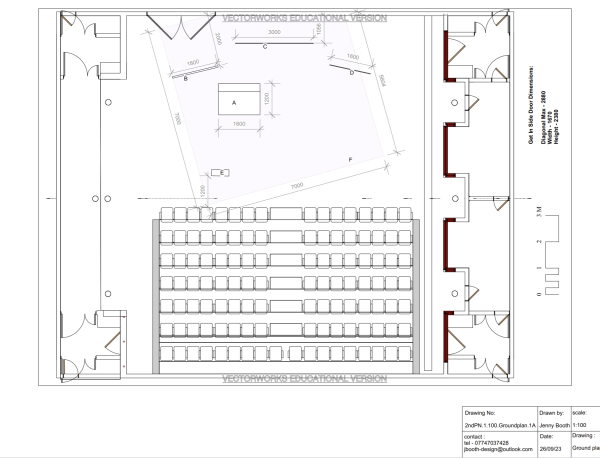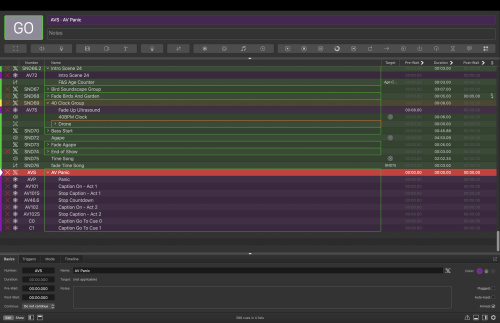Second Person Narrative: Difference between revisions
m →Sound |
Jpartridge (talk | contribs) |
||
| (3 intermediate revisions by the same user not shown) | |||
| Line 62: | Line 62: | ||
=Technical Stage Department= | =Technical Stage Department= | ||
'''Groundplan | |||
[[File:2pn groundplan.png|600px]] | |||
The groundplan shows the location of the captioning screens, age counter, details the painted floor and also displays a position of the truck. | |||
[[File:2pn design elevation.png|600px]] | |||
=Lighting= | =Lighting= | ||
Latest revision as of 12:55, 12 February 2024
Overview
Technical Stage Department
Groundplan
The groundplan shows the location of the captioning screens, age counter, details the painted floor and also displays a position of the truck.
Lighting
Stage Management
Sound
Designing sound for a BSL show forces a whole new way of thinking about what purpose sound has on a show. This also meant that as designer I worked really closely with captioning and video so my design would be as accessible as possible for all. One of the additional task I had to carry out was to describe all the effects so it could be included in the captioning.
This was the final speaker plan used, initially the EX1.5 that is shown on the DS catwalk was under the seating bank as discussed in our initial design meeting however this plan had to change during fit up. I used the ESD12’s as a main L and R firing directly at the audience. And used 3 of the EX6’s to achieve 2 purposes, firstly to supplement the ESD12’s for scenes where addition amplification was needed and secondly to create a panning effect for specific effects. The 4th EX6 was heavily used behind the USR BP screen to add to what was being displayed on this.
As this show didn’t have an AV operator we opted to use OSC to trigger the video Qlab file. This had 2 benefits, one being if video was to crash it wouldn’t take sound with it and secondly it allowed the video laptop to be in the auditorium with the Caption Operator. As we were extensively using OSC we opted to use QLab 5 as it made to process run a lot smoother.
Due to using OSC it also meant we had to include these tests during our own testing procedures, this procedure would test the connection between computers and then check that captioning was working as normal as this was activated though a internal capture card on the video Qlab.
During tech I discovered that the video Qlab didn’t like jumping back and forward between cues so I made this handy little group of commands I would often need.




